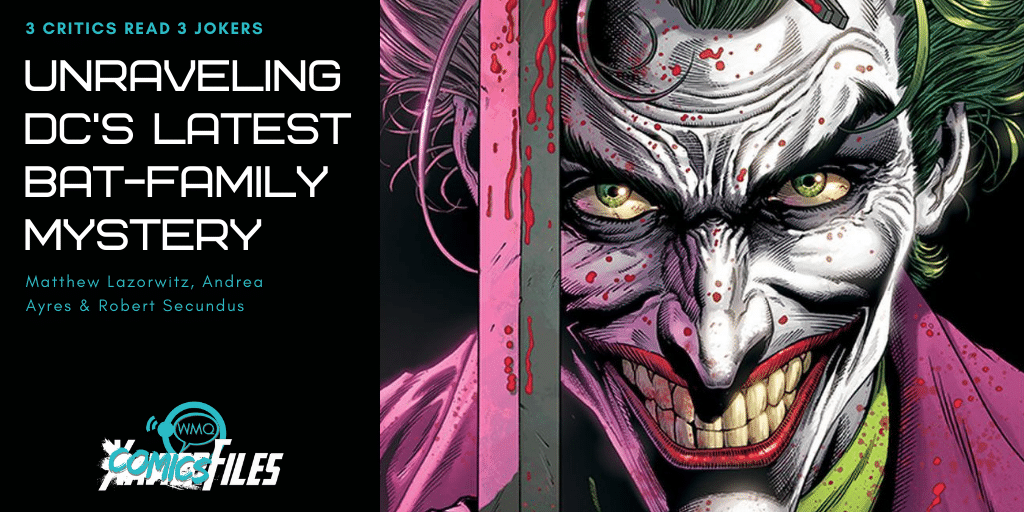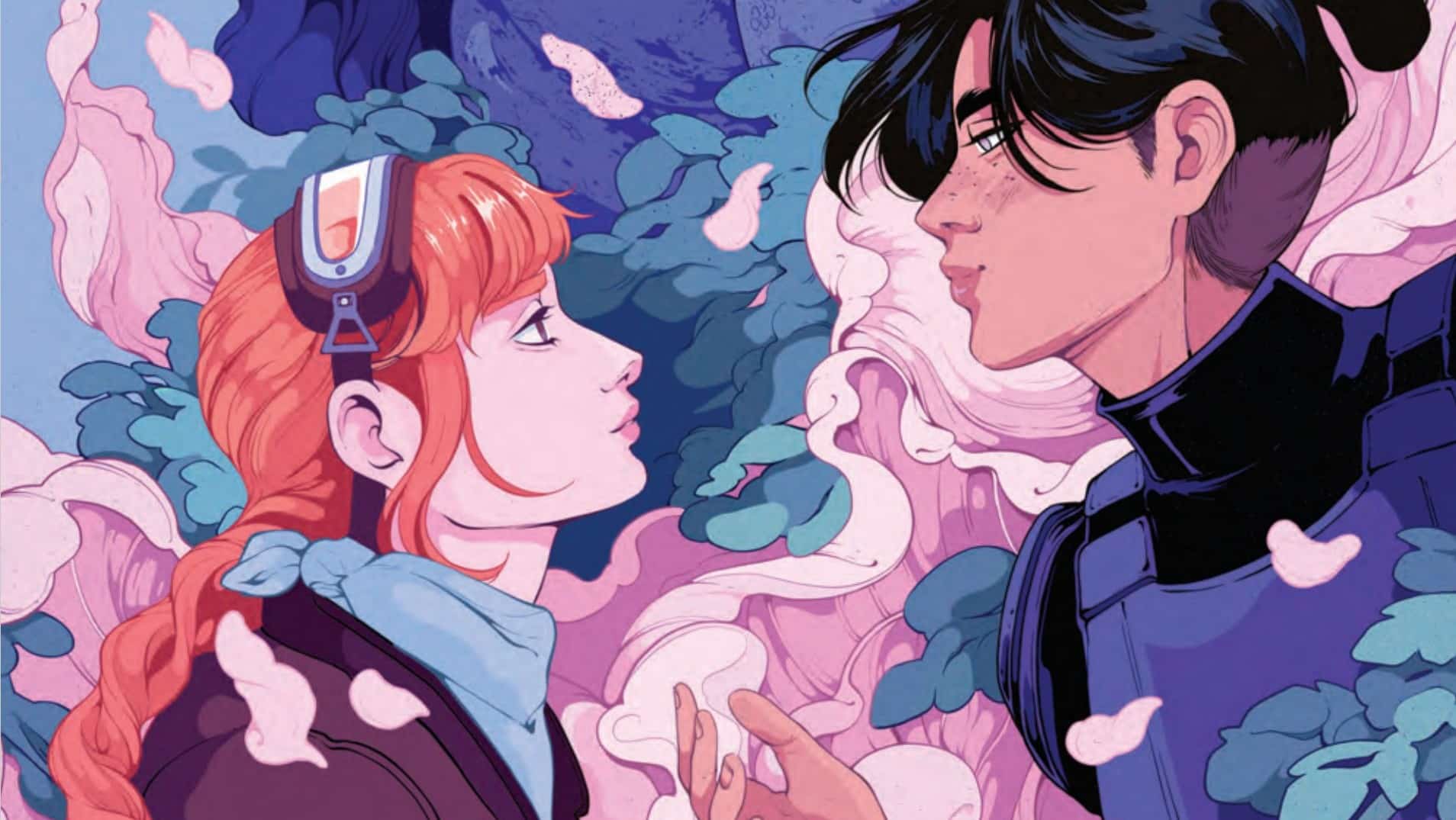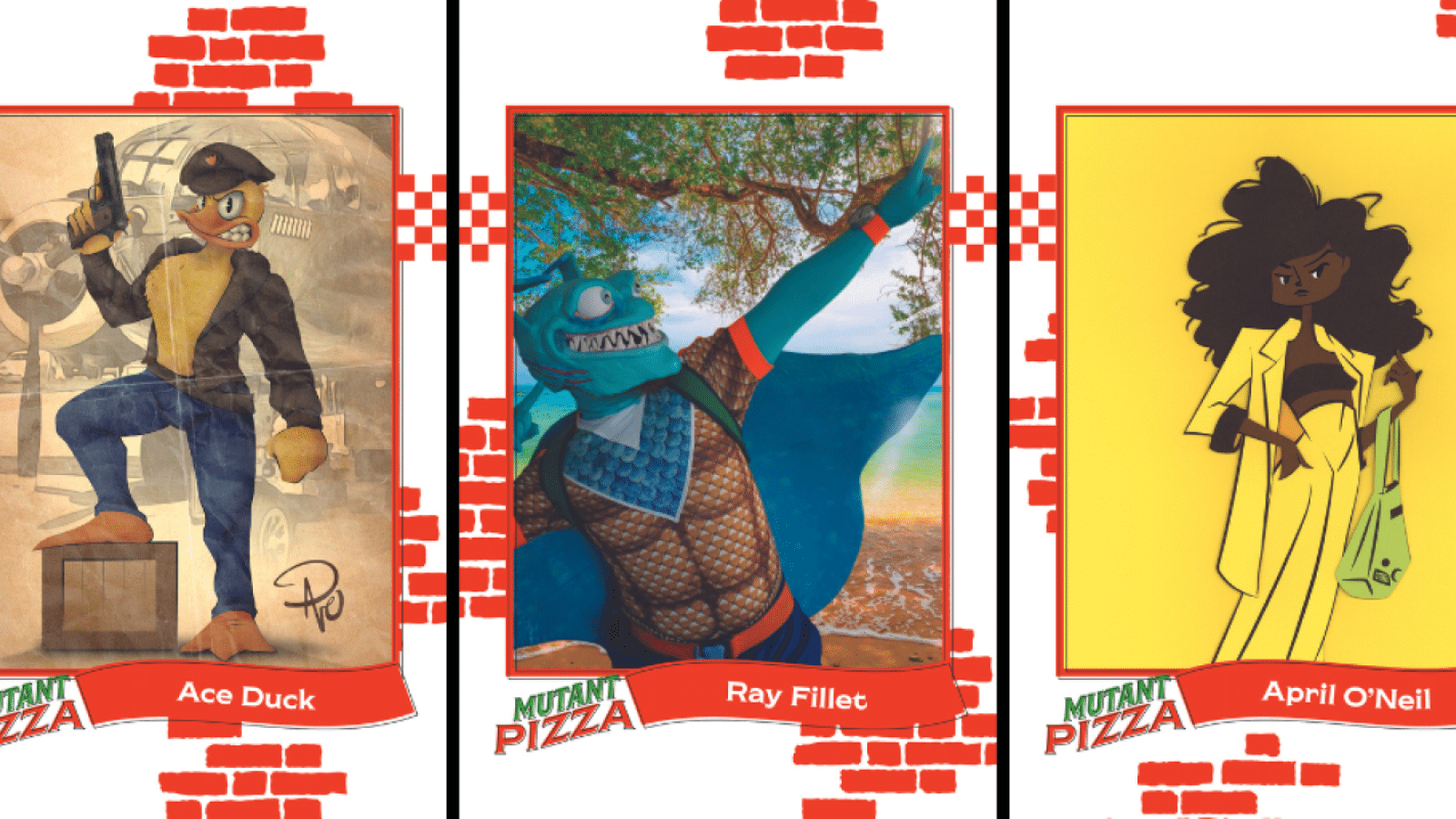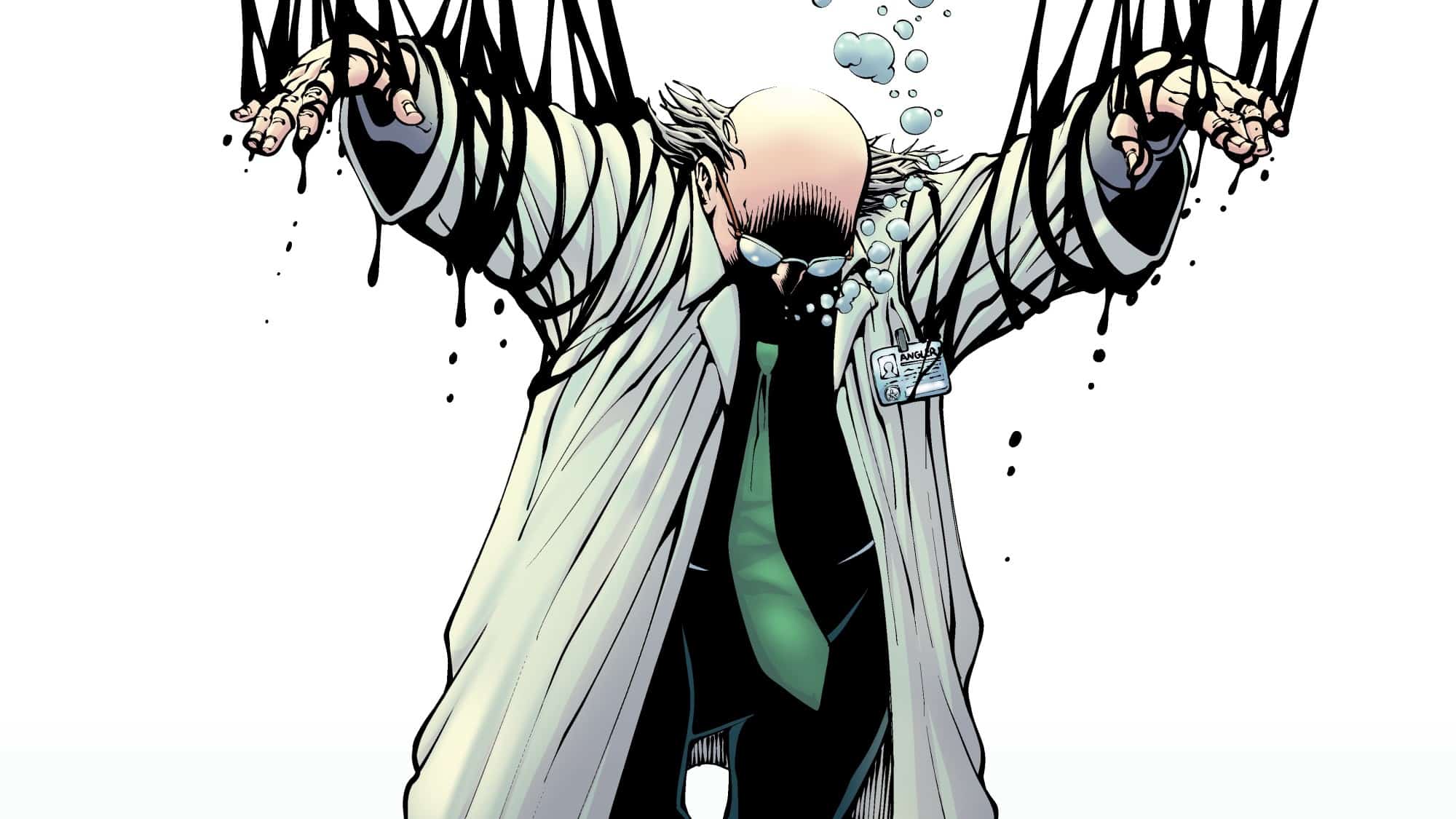Five years ago, Batman made a startling discovery in the pages of Justice League #50: There are three Jokers. Teased since then, this week readers finally begin to get an answer to the mystery, and he’s taking Batgirl and Red Hood along for the ride. Does this really pay off that much lead time and teasing? Let’s find out in Batman: Three Jokers #1 from Geoff Johns, Jason Fabok and Brad Anderson.

Robert Secundus: The last great work of alleged on set abuse-enabler and alleged flirts-with-minors creep Geoff Johns, Doomsday Clock, was all about how superhero comics needed to move past grim obsessions with cynical ’80s Alan Moore comics, and how the DCU in particular needed to get out of that muck. Anyway, let’s talk about this Killing Joke sequel filled with nine-panel grids of superheroes doing murders.
Matt Lazorwitz: Batman: Three Jokers left me … confused might be the only word for it. Not confused by the plot; that seems brutally clear, and I am more than familiar with the rivalry between Batman and the Joker since I’ve read every Batman story for going on 30 years. No, I’m confused by the intent. I don’t know what exactly Johns is trying to say with this series. He seems to want to distill the Joker into these three archetypes: The Criminal, The Clown and The Comedian. Only that distinction reads as artificial at best, and his attempts to pepper in bits of Batman lore, while ignoring others, makes the story seem forced, not necessary for new readers and a distraction to those familiar. It’s a series of funhouse mirrors, only without any fun or way out.
Andrea Ayres: I’m coming to Three Jokers as an absolute noob. When life feels like one big horrible joke, a satire even satire itself couldn’t dream up, stories like Three Jokers tend to fall a little flat to me. There are obvious elements where Johns is trying to poke fun or be self-aware, but it doesn’t feel sincere to me. Who knows? Maybe I’m tired of the Joker gambit, maybe the premise was never meant for me in the first place? Either way, I just never got a sense that the person writing this story even cared. Of course, that’s often the impression I’m left with when it comes to matters related to Johns. Thankfully we do have the art of Jason Fabok to keep us company?
‘How I Got These Scars’
ML: From Scene One, Johns makes it clear that this is a story about trauma and the scars we carry with us. And that’s from the very on-the-nose segment of Bruce Wayne getting patched up after yet another fight and remembering how he got the scars that cover his body. This is, to be fair, an old chestnut, something I’ve seen in Bat books a bunch in the past. And trauma and the trauma of superheroes has been a theme DC has been exploring quite a bit lately, to … not much success if we remember Heroes in Crisis. And it looks like we’re not going to do much better here.
AA: Matt, you’ve touched on something that really grinds my gears here. One element of superhero comics which gets me is the way so many writers approach trauma. They show us the trauma. We see the trauma over and over. Flashbacks are fine, up to a point? But there are so many other elements of trauma. There are so many other ways it could be depicted. I also have grown hella weary of the way Batman often deals (or doesn’t) with his trauma. It tends to feel like it’s done in the same staccatoed way. You see, dear reader, Batman has a troubled past, and he knows it impacts his behavior…if only just… It’s a tiptoe. We go to the edge and pull back because otherwise we’d have about 45 pages of nothing else. So we need to see Batman walk to that emotional precipe and pull back, but how many times until I just lose interest?
Point is, people could read this issue or simply listen to the Papa Roach song “Scars.”

I tear my heart open, I sew myself shut
My weakness is that I care too much
And my scars remind me that the past is real
I tear my heart open just to feel
There. You’ve had the same emotional journey in four lines of lyrics that it takes Johns 50 pages to get to.
ML: You hit a nail on the head there. Superhero comics are, by default, an action genre, and for a character many writers want to portray as psychologically complex, 45 pages of navel gazing ain’t gonna cut it. For every comic like Darwyn Cooke’s fascinating trip into Batman’s psyche, Batman: Ego, there are 20 that just show those damn pearls falling to the alley floor and then Bruce looking off into the middle distance.
RS: So we have three traumatized, three scarred characters, and I’m wondering what, if anything, this comic has to say about trauma through those characters. It feels like, just as we’ve seen Bruce make this journey before, the point in his segment has been made in Batman stories many times before: It’s the emotional scars of childhood that are really traumatizing, not the physical scars. For Barbara, my read is that trauma can make people … driven? That her paralysis leads her now to run really hard on treadmills? And for Jason, my read is that his actions in the story justify the Joker’s argument about trauma — that trauma makes people violent, even murderously violent. What do you folks think? I think each of those takes is a bit muddled in the story, and I think each is profoundly problematic.
AA: To be fair, trauma can manifest itself in any number of wholly problematic ways. Mine has vacillated between working out for half the day, to not eating, to cutting myself off completely from everyone. I think I see what you are getting at though, it’s the presentation of trauma. It feels like it’s done in a way that is more carefree or careless than it ought to be given the severity of the trauma each character has suffered? If I’m being honest, I felt deeply the series of panels with Barbara on that damn treadmill. I could place myself in that headspace. The trauma becomes one with the mental drive, the emotion becomes indistinguishable from the physical sensation until it’s one big f*cking mess. It is an almost primal need to get that treadmill to its highest setting and run until you can’t think. Just run. Of course, as Johns has literally laid out here, you can try to escape your trauma, try to outrun it, but you aren’t really getting anywhere. It’s always back to where you started, and the trauma and that pain is still there. That’s what we’re getting in this issue, albeit a little too clunky and almost voyeuristic for my tastes. In particular the shower scene, which felt weird? I kind of went between the art of this piece working for me and well, not. I’d be curious to know what you both thought about the art? Anything stand out for you both?
ML: Yes, the shower scene was definitely on the icky side, but it’s referencing The Killing Joke, so that’s kind of par for the sad, sad course.
As for what I enjoyed, two words: Laughing Shark. That whole aquarium scene is a double reference to two of the greatest Joker comic stories ever told: “The Laughing Fish” and “The Joker’s Five-Way Revenge,” or the episode of Batman: The Animated Series that took bits from both and mashed them together, and while I wasn’t in love with all the references in this book, that one hit me just right.
RS: Whenever I see a nine-panel grid, I ask myself: Is this actually doing anything for the comic, or is it just here to make people think of Watchmen? And when I saw that there were alternating nine- and six-panel grids, I thought, OK, maybe Fabok is doing something with these different layouts. But in the end, if he is, I don’t think it works — why is Bruce’s trauma at the hands of the Joker in a six-panel grid but Jason’s and Barbara’s in nine? Why is the story asking us to compare these three things while the layouts frame them as fundamentally different? Why does Bruce and Barbara’s focus on physical wounds but not Jason’s, given that his wounds were the most severe? Every art choice in those sequences, aside from the coloring, seems to me to work against what the narrative is asking us to do with what’s in front of us. (For the record, I also enjoyed the Joker Shark).
ML: It’s also something that, while one of the Jokers, The Comedian I think, rants about trauma, there’s no investigation of the Joker’s trauma. Moore spent so much time in The Killing Joke giving readers the sob story for the Joker’s origin, one spawned by trauma, that you’d think Johns would spend some time with it. I frankly prefer my Joker originless, so I don’t mind it not being explored, although it is alluded to in the dialogue between the Jokers, but I wonder: If you’ve become a monster like the Joker, is exploring that even worth the time? Is that maybe something that is trying to be put across here? That sometimes there’s no coming back from the trauma? Or am I giving this story too much credit, and any look at a Joker’s internal life just isn’t worth the time.
RS: I think there’s an implication in what we have that the Joker’s trauma mirrors Jason’s, given both one of the Joker’s dialogue with Jason and the emphasis in the plot on ACE Chemicals’ Joker Juice. For Johns, I think, evil and violence aren’t things people choose to do, they’re just the result of things done to them.
AA: You know, Robert, I think you’ve touched something here which has caused me to pinpoint what I dislike so much about Three Jokers so far. Choosing violence, that’s easy. Choosing to do an evil deed, I think that’s pretty easy, too. At least when it comes to storytelling. I guess what I’m trying to get at is this: It’s terrifying when you pull back the curtain and realize the hurt you’ve caused — even with all those factors that contribute to creating an environment where it might make it easier to hurt — are all you and they always have been. I’ll get a little personal here, but I’ve been dealing with a resurgence of eating disorder-related behaviors, and it causes me to be a real damn ass sometimes. OK, a lot of the time. I snap at my husband more than I want. One day he expressed a need to me, one I didn’t have time for because I was busy doing the ED thing where I ruminate about what a piece of garbage I am. I told him I was having a hard time, and he said “I am, too, don’t my feelings matter?”
That hit me like a sack o’ bricks. We’ve all experienced pain. It’s easy to forget, too easy. I don’t think stories should make that easier? I think the point I’m trying to make is that it shouldn’t be as easy as Johns makes it seem. I know comics can’t be everything to everyone. I know some stories are just about entertainment, and I 100% support this. But if he’s going to invoke trauma and violence, I at least want something more interesting done with it. Not sure if this is making any sense to anyone but me though!
RS: You are absolutely making sense. The story wants to be taken seriously, wants to be seen as a serious reflection on trauma, but takes easy routes instead — and ends up being a slap in the face to anyone who has experienced that kind of suffering.
3 Jokers, 3 Bats
AA: Alas. OK. I’ve done my morning meditation and I can now deal with the fact I had to read the word “jokerized” again. I mean. I get it, OK? People want to blame bad behavior on being dipped in a vat of toxin, but what if some people will look for any justification as the cause of their bad deeds?
“They seem to have motives. Even if they aren’t clear yet.”
Are people really “red-pilled,” or were they just always assholes? I can’t help but walk away from this comic without thinking that much of what Johns is doing here is trying to take the piss out of how frequently Batman comics do the entire “but why is this character really like this?” Johns wants the reader to know he’s self aware enough to understand how formulaic some of these storylines are. I dunno, y’all. Sometimes when the writer does that meta thing, it can feel like it’s done more in service of the writer than of the story?
ML: Johns has never shied away from meta-narrative. He loooooves meta-narrative. Doomsday Clock and Infinite Crisis are basically each a long meta-narrative about how much he knows about superhero comics and how much he wishes heroes were heroes. And then he goes and brutally kills the entire JSA in the first ten minutes of the Stargirl pilot. Anyway…
I’m really doing my best to not review this book as a hardcore Batman fan, and insetad look at it from a wider lens, because if you dig into the details, you’re gonna wind up having some problems. I realize this is a Black Label book, so continuity doesn’t have to line up quite right, but this does spin right out of stories that happened at the heart of main DC continuity. And it feels like Johns is taking these characters and writing them in whatever way fits the story, and has minimal connection to what has been done with them elsewhere.
Jason Todd, the Red Hood, hasn’t been this Punisher knockoff for pretty much a decade now. This Jason reads like the one who appeared in his immediate post-resurrection appearances through the first volume of Batman and Robin, and ignores all the work Grant Morrison did to redeem him in Batman Incorporated and all the, “I’m a tough guy, but I don’t need to kill” stuff that has been in the various Red Hood comics since the New 52. And Jason screaming at Joker about why he uses the Red Hood identity is the most on-the-nose, tell-not-show storytelling I’ve read in a long time. I am all about not letting continuity be a crutch, but suddenly just reverting a character back to the past for the convenience of a story, while also making weird Bat history deep pulls that show you know these backgrounds? Not feeling it.
And Andrea, you had some feelings about Barbara, right?
AA: I really do. First, I have to shout out our colleague Cori McCreery’s write-up, which perfectly illustrated my issue with the Gordon storyline here. How many times do we need to revisit it? I am also reminded of a piece that ran in The Guardian a few years back about The Killing Joke which cautions us against reactivating and celebrating it. Feels like that’s definitely the opposite of what we are getting in the final few pages of issue #1.
Red Hood holds a handgun with the obvious intention of killing whatever Joker sits before them. Batgirl positions herself to stand in the way. She tries to talk Red Hood down. It’s a scene that feels so cruel to me. I am upset she’s put in the place of having to protect the person who caused her so much pain and trauma. That makes no mention of Batgirl having to relive that trauma in real time when Hood finally decides to pull the trigger. Not great.
RS: One thing that’s deeply weird to me, in a book that seems to be focusing on, in large part, the relationships between these three characters, is the lack of the broader Bat-family. It makes sense to me to focus on these three characters, as they’re the three in the typical Bat-cast that are most directly tied to the Joker. But these people aren’t alone. They have a family, and they have relationships that, for them, have helped them both heal and change over time, and, for us readers, help complicate and expand our understanding of their characters. Here I don’t have a great sense of who Barbera is, or who Jason is, beyond the very narrow slices we’ve already discussed. And I don’t even know if this is a world where Tim, Damian, Cassandra, Kate, Stephanie or Duke exist, and though we know a first Robin existed, we have no idea who Dick is now or where he is. I think the lack of acknowledgement of the broader cast makes these characters feel more isolated, and that isolation makes the events of the book, and the really toxic interactions between the three characters we do see, feel even more cruel. What do you folks think? What sense do you have of Bruce, Barbara and Jason together as a Bat-family here? How does the book’s take on the Bat-cast affect your reading of the characters?
ML: The thing is, there are also two Batmen, and I don’t mean Bruce Wayne and Dick Grayson. Throughout the character’s history, Batman has swung from barely-holding-it-together loner and Batdad on the regular; I’ll spare everyone the Batman history lesson, but I plan to write a whole thing about it someday.
The Batman we’re seeing here is so very much the former and not the latter. And there are plenty of stories that have loner Batman working with the Bat-family and showing off his antisocial behavior. And I want this to be a story where Batman works it out and winds up making peace with his past with the Joker, his prodigal son and the daughter he never had. But that’s not what I’m feeling. I’m feeling like Batman is being drill sergeant Batman because that serves the story, versus the story serving the character.
A Mystery Worth the World’s Greatest Detective?
ML: So, spoiler hats on, readers. Let’s put out our theories on what the heck is going on with this Joker mystery. When the three Jokers gather and they’re talking about their plan, Criminal Joker says, “We do what we always do. We try to make a better Joker.”
If the first Joker was indeed trying to create the best Joker, then there’s an interesting story there. But from Day One, the Joker has been a homicidal narcissist. I can’t imagine any iteration of the Joker I have ever read thinking there would be a better Joker than him. And it would be a sign of weakness to the next Joker that his Mentor in Madness (™patent pending) would think he was better. This is a character who regularly kills subordinates for no reason, and competitors for being there.
That’s why I’m going to need a strong explanation as to why we have three Jokers. My instinct says it would be something more akin to the Sith Rule of Two: one to possess the power and one to crave it, and the apprentice eventually surpassing the master. Wouldn’t the better Joker eventually kill the previous one? It doesn’t make sense to me that we’re building a cabal of Jokers.
RS: I think the key line immediately follows the one you quoted: “It’s time the Joker had more meaning.” I think both the meta-narrative and the narrative are about making the Joker mean something, and I think that’s why, at least, in Johns’ mind, there’s gotta be three — no single one of these characters can mean everything people associate with the Joker. And why does there have to be one more? Because characters fray over time; metaphors lose meaning. The Clown Prince of Crime doesn’t mean much anymore — neither does the sadist Joker, or the absolute monster mass-murdering Joker. It’s all played out. So Three Jokers is going to give us a fourth, new Joker that actually does mean something (and, I expect, he’ll kill the remaining ones at the end). What really worries me is that all signs point to Jason being that new Joker, and I can’t think of a more meaningless twist; at that point, it’s just an ouroboros of Jokers. What does the Joker mean? Not much; he’s just a Batman character that became the Joker due to, well, the Joker.
ML: That’s interesting. Not the Jason Todd bit; I cringe at that. What you’re saying is physically embodying what Grant Morrison proposed during his run on Batman: Joker wakes up every day and reinvents himself because of, in spite of, or in reaction to the world around him. But by physically embodying that, you’re stripping away Morrison’s “super sanity” and just making the Joker feel like something lesser, to me at least.
AA: I’ll keep this brief. Am I marginally interested in seeing how Red Hood, Batgirl and Batman work together (or likely don’t)? Yes. There’s a soap opera quality to Three Jokers, and now I have to know what happens. Close the circle.
ML: No matter what happened in this issue, I was going to buy this series; the completionist is strong with this one. As much as I was frustrated, there are a couple of moments that were cool, and the whole thing was visually stunning. I wanted to love this book, I really did, and I want it to stick an ending better than its start.
RS: I’m going to read to the end, but I am, at this point, not invested in the mystery. The Three Jokers undercuts itself throughout the book; it’s supposed to ask Big Questions like, What Makes Someone As Evil As The Joker? The answer: Joker Juice. Why did the Joker seem to change so radically throughout his history? The answer: He didn’t. Whenever a Joker acted differently, that was a different guy. What makes the Joker truly different? The answer: Really, not much. They even argue throughout the issue over which Joker is which. They take credit for each other’s deeds. They speak in unison. And Jason, in a last-page reveal that made me laugh out loud for quite some time, can’t even tell if the Joker he murders is the one that beat him near to death. And, most importantly: Why didn’t Batman, the world’s greatest detective, ever figure out that these different people were in fact different people? Answer: Well, they didn’t decide to do three crimes at once before. Now they have. The most important mystery to me is one that expands beyond the scope of this comic: Does Johns know what “ass bleaching” is, and did he intend to reference that cosmetic treatment when he tried to write badass Red Hood dialogue? I keep asking DC people, and no one will say.
AA: Robert. Yes. All of that. Three Jokers is the comic equivalent of:
Bat-miscellany
- Bruce Wayne did not skip neck day.
- I am probably the only one, but every time, for five years, I’ve read “Three Jokers,” I start singing it in my head to the tune of “Two Ladies” from Cabaret. That means Batman is played by either Joel Grey or Alan Cumming. And I am good with that.
- Poor Gaggy Gagsworthy. He doesn’t appear for fortyish years, then Paul Dini brings him back and makes him Harley Quinn’s stalker, then Geoff Johns feeds him to a shark.
- It feels like Johns is really taking a lot of his Joker inspiration from the Batman movies. Comic book Joker has rarely cared about the mob, and the only comic book continuity where Joe Chill is in jail is the one created in the run-up to the three-Joker reveal in “Darkseid War.” That stuff is right out of the Nolan trilogy.







